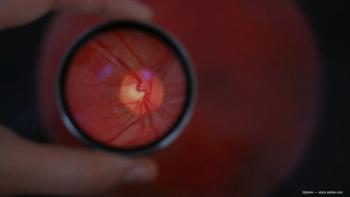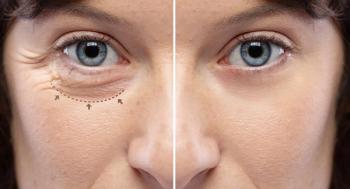
AAO 2025: Philip J. Ferrone, MD, highlights safety and efficacy findings of gildeuretinol in Stargardt disease
In the Phase 2 TEASE 2 trial, gildeuretinol was well tolerated and showed promising trends in slowing ellipsoid zone loss and preserving low-luminance visual acuity in patients with Stargardt disease.
Philip J. Ferrone, MD, provided an overview of the TEASE 2 study (NCT02402660), a Phase 2 clinical trial evaluating gildeuretinol in patients with moderate severity Stargardt disease, at the American Academy of Ophthalmology 2025 annual meeting, October 18 to 20 in Orlando, Florida. The study enrolled 79 patients—40 treated with gildeuretinol and 39 receiving placebo—followed over a 2-year period.1 Ferrone is partner with Vitreoretinal Consultants of New York and professor of ophthalmology at the Donald and Barbara Zucker School of Medicine at Hofstra/Northwell.
Ferrone began by outlining the study design: “In the TEASE 2 study, which was a study of moderate severity Stargardt disease, 40 patients were treated with drug and 39 patients with placebo, and those patients were looked at over a 2-year period.” The primary end point was the area of ellipsoid zone (EZ) loss, representing photoreceptor degeneration.
“When you compare patients treated with drug compared to patients in placebo,” Ferrone explained, “there was a 28% reduction in the area of EZ loss in the gildeuretinol-treated groups.” Although this reduction was clinically meaningful, statistical significance was not achieved (P = .20). “This study, in retrospect, was a little bit underpowered,” Ferrone noted, explaining that despite the curves separating over the 24-month follow-up, the trial did not meet the threshold for P < 0.05.
The secondary end point, low luminance visual acuity, did show a measurable benefit. “There was an improvement of 3 fewer letters lost in the treated group compared with the placebo group,” Ferrone said. He emphasized the importance of this result: “To see any maintenance of visual acuity in these patients that have progressively advancing disease that has no treatment to improve it or stabilize it is very, very refreshing and impressive.”
Microperimetry findings did not differ between groups, a result Ferrone attributed to variability and reliability challenges in this young patient population. The study cohort had a mean age of 21 years (range 8 to 44 years), and no subjects exhibited macular atrophy at baseline. “They had abnormalities in microperimetry and ellipsoid zone loss, but they were a very varied patient population,” Ferrone explained, noting the baseline EZ loss ranged from 0.4 to 6 mm².
A key highlight of the study was the favorable safety profile of gildeuretinol. “An excellent aspect of this drug is how safe it is and how well it's tolerated,” Ferrone said. “There were no abnormalities seen any differently between drug-treated patients and the placebo group.” He further emphasized, “Patients had no light-dark adaptation issues, and patients had no symptoms in the treated group, so it was very, very well tolerated.”
Ferrone also noted that the drug has been evaluated in atrophic AMD, where “there were some promising signals,” but the focus remains on Stargardt disease due to the unmet need in this population. He concluded, “It reduces the progression, whether you look at atrophy or you look at severely affected patients, moderately affected patients, approximately 22% to 30% reduction in progression over 2 years.”
Summarizing the potential impact, Ferrone said: “It’s a terrible disease… has drastic effects on vision in very young people. Any treatment, but especially a treatment like this that's so safe, so well tolerated, and effective, is really exciting and fantastic.”
REFERENCE
Ferrone PJ. Safety and efficacy of oral gildeuretinol in participants with intermediate-stage Stargardt disease. Presented at: American Academy of Ophthalmology 2025 annual meeting; October 18-20, 2025; Orlando, FL. Session RET14.
Newsletter
Don’t miss out—get Ophthalmology Times updates on the latest clinical advancements and expert interviews, straight to your inbox.









































